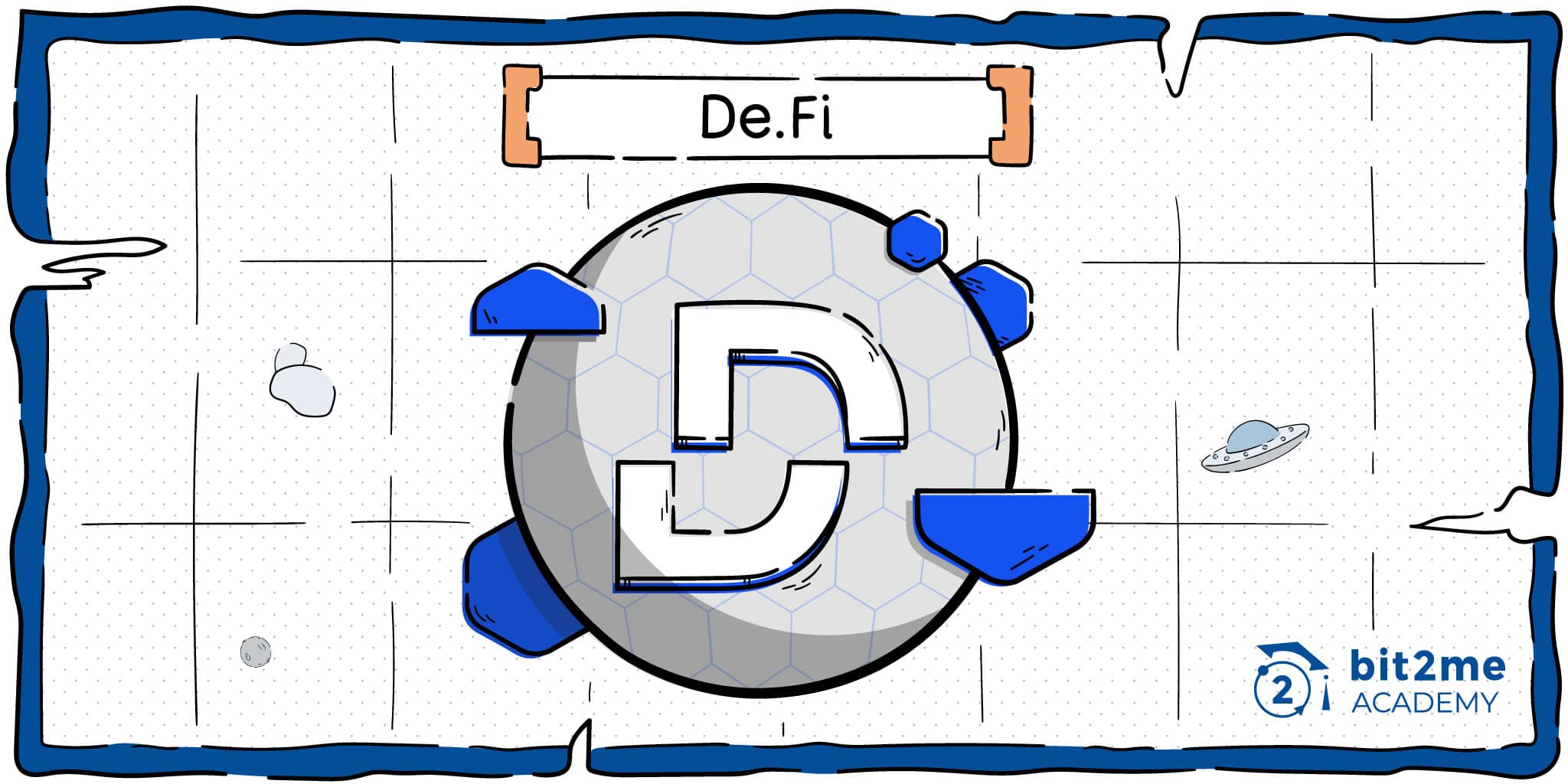Orchid (OXT) is an interesting project that uses blockchain technology to encourage the creation of a decentralized and secure VPN service network for everyone.
Une of the most powerful technological tools today is the Internet. However, a technology built mostly on standards and free software is not as free as we assume. This is precisely the contradiction that Orchid (OXT) definitely wants to change.
We use the Internet both for our communications, commerce, leisure... everything has a space in this network of networks. However, there is a growing problem: access to the network is limited. From governments that do not want you to access their content in any way, to companies that simply deny you entry to a service. Everyone spies on you and sees you as a product, one that makes a lot of money. In each and every one of the cases, the problem is the same: we have no control over the connections, the data routing and therefore we can easily fall victim to these practices.
From the start of the Cryptowars, cypherpunks have feared this moment and have prepared for it: easy access asymmetric cryptography, defense of digital freedoms and the creation of tools for anonymity such as freenet, I2P y TOR they are just part of that huge effort to fight censorship and oppression. And, in the midst of all this, blockchain technology also plays a fundamental role. Not only through the creation of a decentralized form of money, but also through technologies that help avoid falling into this censorship, precisely what Orchid and its creators have set as their fundamental objective.

What exactly is Orchid (OXT)?
Orchid is a blockchain-based platform that allows its users to access virtual private network (VPN) services in a completely decentralized way. The objective is to allow users anywhere in the world to bypass corporate or government censorship, to access Internet services freely and privately.
To achieve this, Orchid has prepared a pool of connection providers that are capable of routing user traffic to achieve their goals., and in exchange for these services, these providers receive Orchid tokens (OXT) in compensation for the directed traffic and the computational power necessary to control that traffic safely.
Orchid is the effort of a large group of experts including Jake S. Cannell, Justin Sheek, Jay Freeman, Greg Hazel, Jennifer Rodriguez-Mueller, Eric Hou, Brian J. Fox, and Dr. Steven Waterhouse, who dedicated themselves to study the problem of Internet censorship in 2017, the same year that the company Orchid was founded. Development efforts first bore fruit in November 2019, at which point the Orchid network goes live and the white paper of the project. Since then, Orchid has made its way as a decentralized private browsing network, with financial incentives and hotspots around the world.
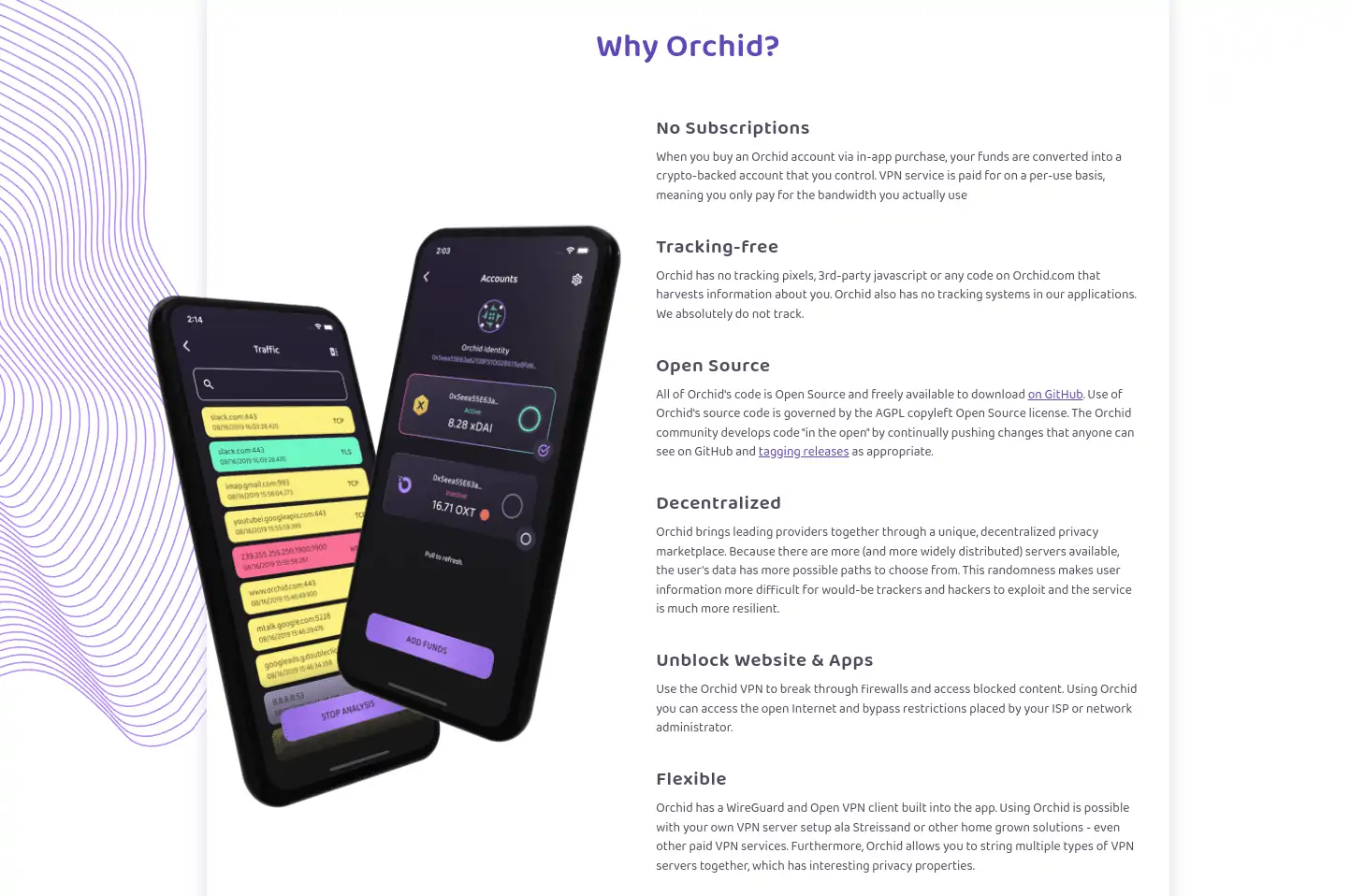
How does orchid work?
Orchid is actually a network of nodes that communicate with each other and that allow you, as users, to connect to them. In this way, all the traffic generated is routed through its network and it is possible to access the Internet by bypassing the censorship or restrictions that you may suffer in your location. At this point, we can see Orchid as a privacy solution very similar to the one offered by networks like Freenet, I2P or TOR. However, there are several points where Orchid differs from these solutions. Especially, because none of the above offers incentives to provide services, and sometimes they can be so slow that their use loses all sense.
To achieve this, Orchid has created an infrastructure that allows its services to be offered seamlessly from anywhere in the world, and at the same time, is able to incentivize the creation of nodes to strengthen the network and make it more difficult to censor and track.
Orchid Protocol, free your connection from chains
The first of the structures that Orchid has created for its operation is the Orchid Protocol. It consists of a connection protocol that OpenVPN or Wireguard can use for its connections, and that uses the WebRTC protocol as a connection layer. In this way, all the traffic that is handled in the Orchid nodes is encrypted point-to-point, which allows the information to travel safely and our privacy is maintained.
Up to this point you may think that what Orchid offers is just any VPN service, however, ask yourself the question How much does a VPN service cost and how private is it really? A subscription to a VPN service can cost upwards of €10 a month and many times your offer of «Privacy» It is not such, due to the regulations that these companies must respect. In the case of Orchid, the network is completely decentralized and the system is built not to log your activity. In addition to allowing you a differentiated use of the connection, which you can use and pay through micro payments.
However, Orchid does not offer complete anonymity, as that is not its goal. Instead, the intent of the protocol is to allow you to bypass blocks or censorship, keeping your connection private in the eyes of the Internet service provider. This may seem like a disadvantage, but it has the advantage that Orchid's connections are much faster than connections from networks like Freenet, I2P or TOR.
Orchid Market, offers bandwidth to the world
Building the protocol is only the first step for Orchid to work, at this point it is necessary to organize a market, a space where service providers can exchange bandwidth with relays, bridges (exit nodes) and users. Here are three new concepts:
- The relay nodes (relay nodes), which are actually relay nodes capable of capturing traffic and routing it throughout the network.
- The bridge nodes (bridge nodes), which are the nodes that are responsible for creating exit points so that the requested sites can be accessed.
- And finally the users, which are all those users who use network resources.
Orchid has organized the network in such a way that relay and bridge nodes can stake OXT tokens in order to obtain dividends by making their network resources available to users. And, at the same time, these nodes receive small payments from users when they make a request to access a site, which entails the use of bandwidth by these actors.
The staking system in any case ensures that the nodes work honestly and keep the network running at all times, just as it happens with other networks. The idea of this system is to prevent nodes from acting maliciously trying to steal information, although to avoid this, there are cryptographic security measures that ensure that all network traffic (from input to output) is completely encrypted. asymmetric shape.
In addition to this, the staking system and nodes connected to the network (such as relay and bridges) are available within a smart contract on the Ethereum network, ensuring free and secure access to the system at all times.
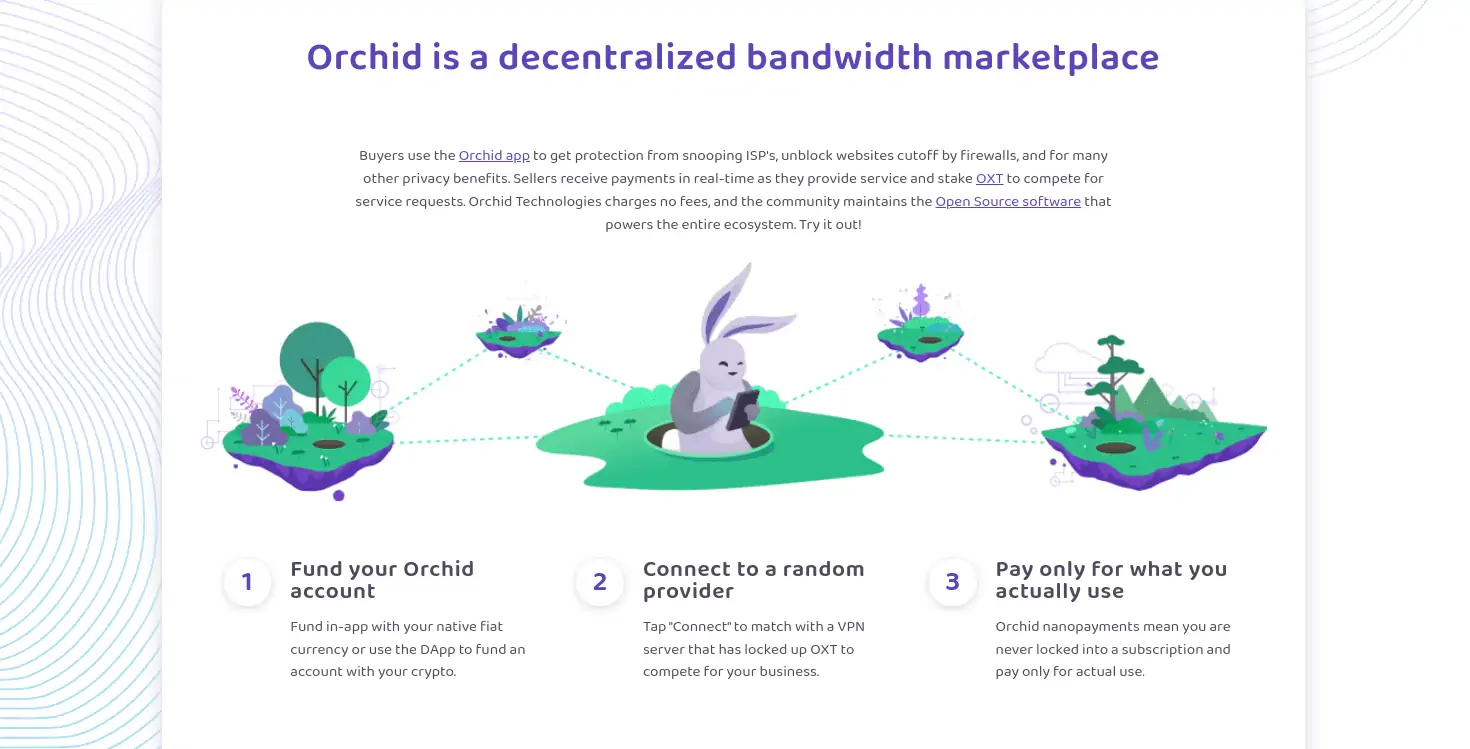
Probabilistic nanopayments, a second layer solution for Orchid
Now, the use of Ethereum (ETH) may seem a bit out of place, especially when we talk about “micropayments”. Currently, it is common to see how the Ethereum network becomes saturated and the price of gas per transaction skyrockets to the point that a single transaction can exceed €50. Certainly using Ethereum as a means of payment is not efficient and would completely defeat Orchid's goal.
Probabilistic nanopayments introduce a second layer technology developed by Orchid that allows users to pay network usage fees very cheaply and quickly. To achieve this, nanopayments use a probabilistic ticket system that distributes tickets between nodes. These tickets give the bearer the chance to claim money, so the more tickets the more likely you are to win. This probabilistic ticket system is sent off-chain, and there the nodes of the network accumulate them, until they can collect a certain amount and claim their reward. Thus, from among all its tickets, the node is likely to win and receive its commissions, thereby reducing the use of on-chain transactions, and greatly reducing the cost of using the network.
This payment system is possible because when a user buys OXT tokens and deposits them as a balance in his account, in reality his balance reflects the value of tickets that his OXT tokens represent, leaving the OXT tokens on the chain, and using the value of your off-chain tickets to pay very cheap commissions.
Orchid OXT Token
Orchid's native OXT token is an ERC-20 Ethereum token, whose main functions are:
- Serve as a means for nodes to stake and thus be able to participate in the platform.
- Allow users to access services.
This allows the Orchid Market to function and create service and economic opportunities for all while maintaining network security at all times. This token is inflationary in nature and there will only be a total of 1.000.000.000 OXT in its entire existence. Your smart contract can be seen in this link.
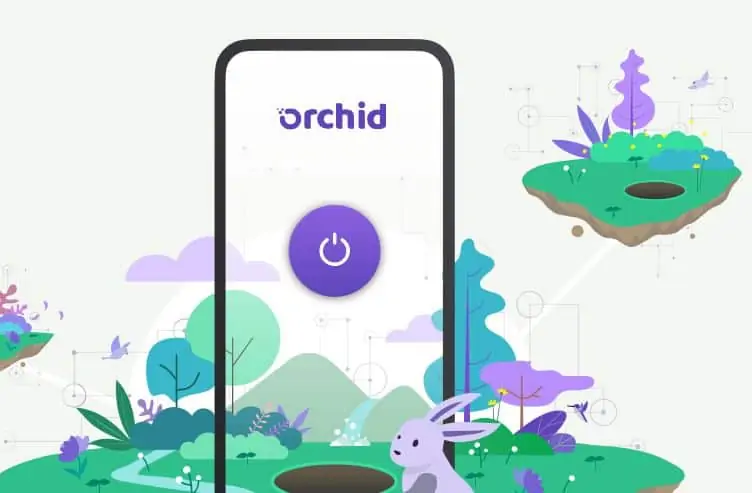
Security within the network
Security is one of the main pillars of Orchid, and to keep it at the highest possible level, they have created several mechanisms. First, the network is resistant to sybil attacks, so such an attack is virtually impossible. To achieve this first milestone, Orchid has built its network around a pair of consensus protocols that are Proof of Work and Proof of Stake.
The PoW system is used so that each node has to generate a unique computational work that uniquely identifies it within the network. This work is such that, if an attacker had to carry it out on several nodes, it would cost him a small fortune, which discourages this type of action. For its part, the PoS system is also used for the same purpose, by asking each node to stake an OXT token to obtain participation rights within the network.
In addition, Orchid is resistant to traffic analysis and Man-in-the-Middle (MITM) attacks. These are types of attacks that are used to capture data and learn its content. This is possible because the Orchid Protocol is a protocol that encrypts point-to-point information using an asymmetric key system. This is an additional protection to the one that can have, for example, the connection between the user and the website (generally an HTTPS connection with TLS 1.2 or TLS 1.3) which ensures that no one can intercept the information. However, keep in mind that this last feature does not depend on Orchid, but on the website, and if it is not established, anyone on the other side of the exit node can intercept the information (the same happens in TOR and other networks).
As for the staking system and the rest of the platform's blockchain functions, all of them depend on Ethereum, so their level of security is the same as this network, so we should not worry about it given the level of computational potential that Ethereum has at the moment, and the PoS security system that ETH2.0 will have in the future.
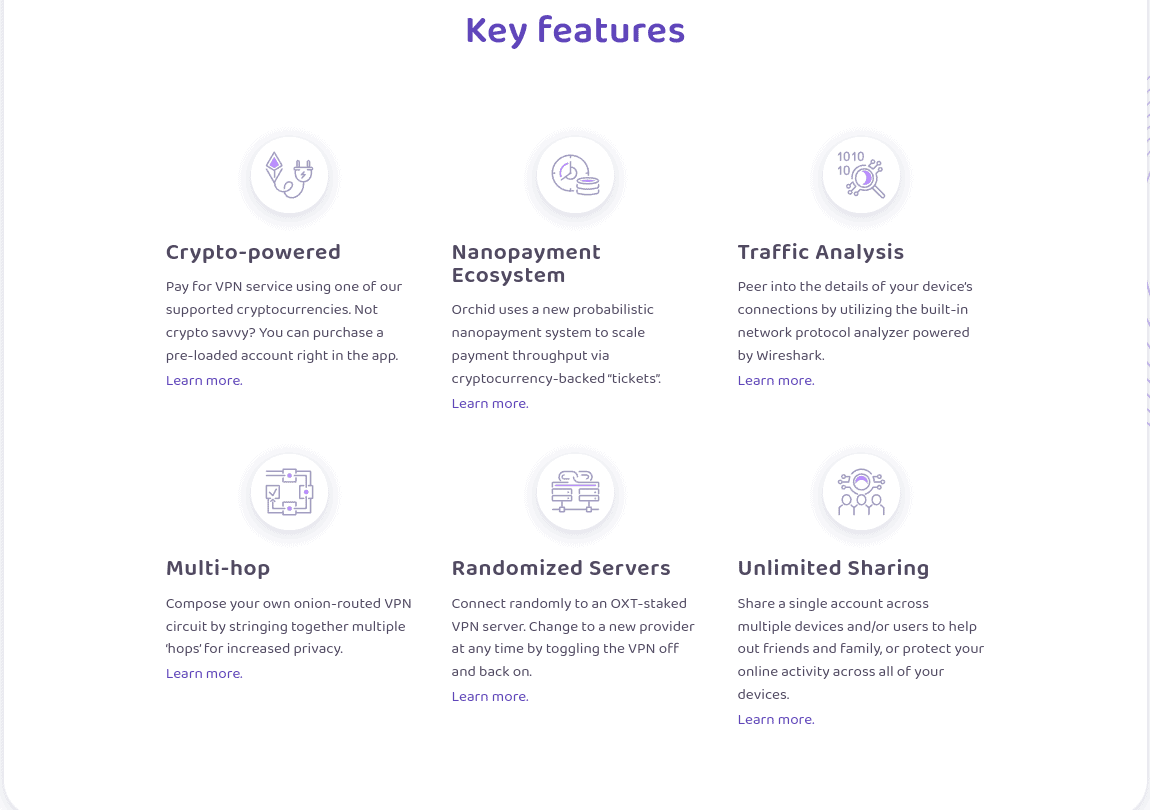
Pros and Cons of the project
Pros
Among the advantages of Orchid we can highlight:
- It offers great scalability and speed, as your network does not rely on aggressive connection obfuscation. Furthermore, Orchid is based on much more efficient protocols.
- It incorporates a fast and cheap payment solution, which avoids cost overloads for users and correctly incentivizes nodes.
- It is decentralized and resistant to censorship, since the more nodes are integrated into the platform, the more difficult it is to block it.
- Easy to use and mobile friendly. This means that users do not need extensive knowledge to use the system.
Cons
- One of the main disadvantages of Orchid is the use of WebRTC. WebRTC has known security issues that can lead to discovering the IP address of a device using Orchid. The vulnerability also affects commercial VPNs and even TOR. This issue is known to the Orchid development team and measures are in place to mitigate it while working on a full fix to the issue.
- The system does not offer complete anonymity. Because of this, governments and companies with resources can trace connections and find the starting point of the connection (the user).
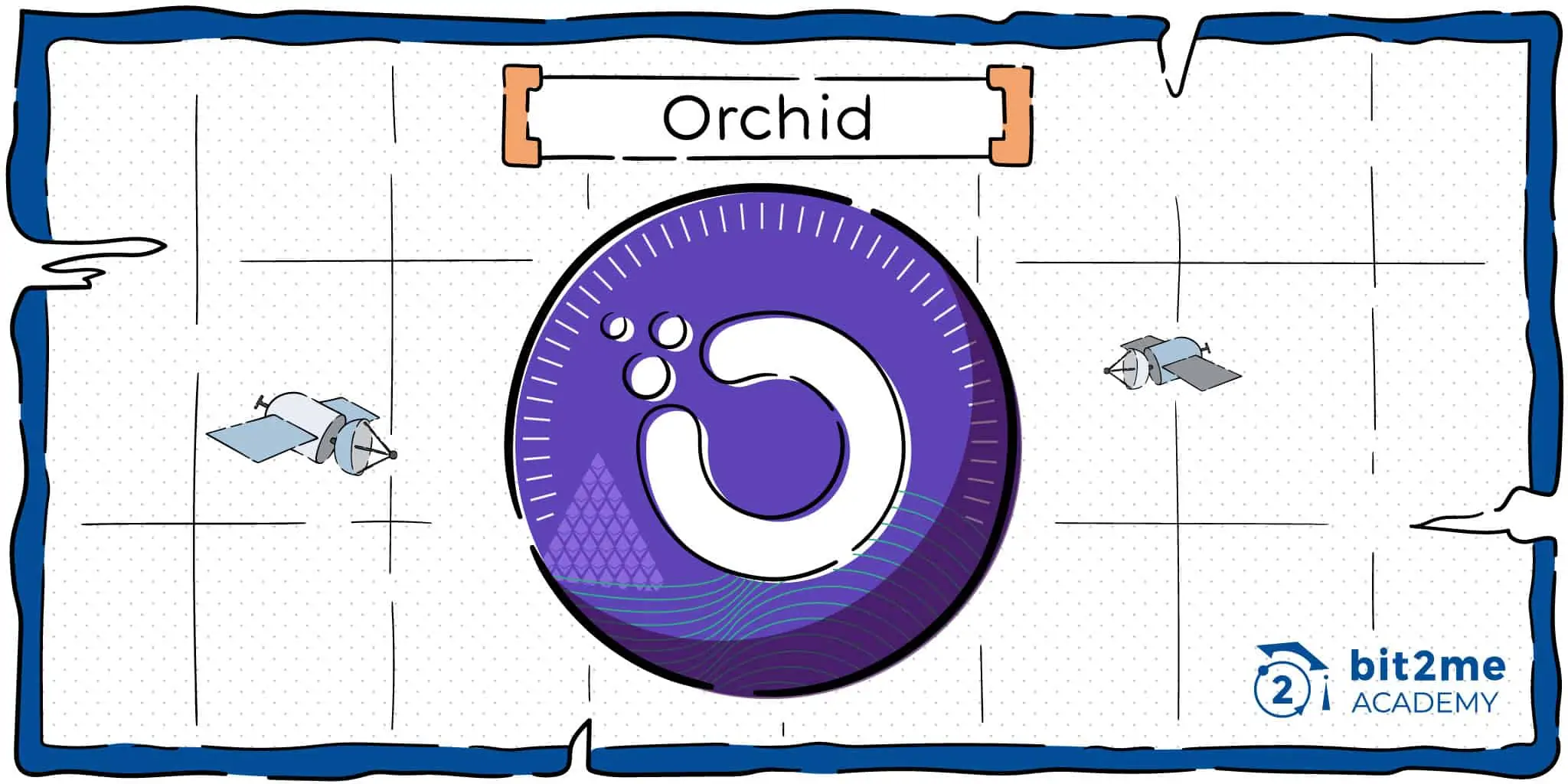

 Author
Author
